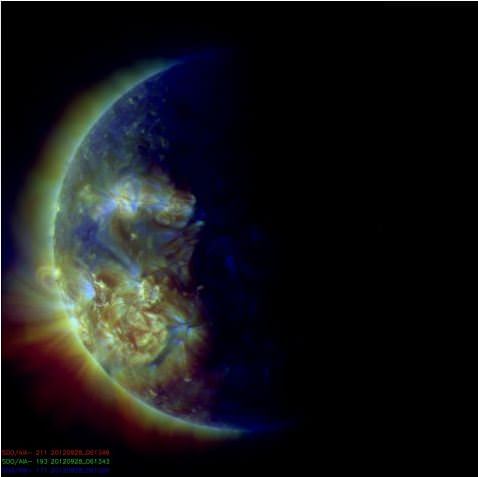Now you see it, now you don’t! Around the solstices, the Solar Dynamics Observatory ends up having an “eclipse season,” where the Sun, Earth, and the SDO line up, and some of the images and video sent down from the spacecraft appear as though the Sun disappears for a while or just part of the Sun is visible. This is a normal part of life with a geosynchronous observatory, the SDO team says.
They explain it this way:
“Twice a year, SDO enters an eclipse season where the spacecraft slips behind Earth for up to 72 minutes a day. Unlike the crisp shadow one sees on the sun during a lunar eclipse, Earth’s shadow has a variegated edge due to its atmosphere, which blocks the sun light to different degrees depending on its density. Also, light from brighter spots on the sun may make it through, which is why some solar features extend low into Earth’s shadow.”
There’s no way to avoid the loss of images, but the continuous contact with the ground station SDO’s orbit allows was judged to outweigh the loss of some images.
This eclipse season started September 6, and it ends tomorrow, on September 29, 2012, so see it while you can!

